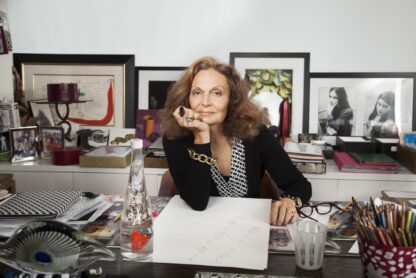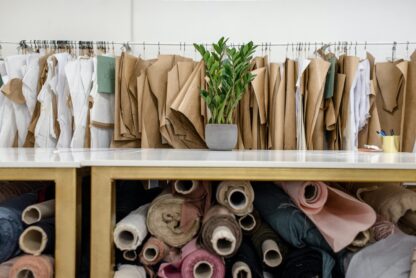The designer, in the collective imagination, is the most relevant figure in a fashion house.
And in fact, the Design Department represents the creative soul of the Maison. But the designer/creative director does not just deal with designing fairytale clothes: his activities range from planning to design, without forgetting the essential alignment with management.
How does a design department work? What are the different positions? What are the designer’s daily activities and what to study to become a designer? Alessandro Biasi, designer of the A-Lab brand, answered these and other questions.
Hi Alessandro! Can you tell us in a few words what a designer does?
The designer creates a dress or, more often, an entire collection, declining a theme in a proposal dedicated to a specific market segment
What is the role of the designer inside a fashion company? Who are his collaborators?
The structure of the design department depends very much on the size of the company.
In the biggest fashion houses, designers work in teams (junior and senior designers) dedicated to the various product categories. At the head of each team is the head designer of the specific category/collection: the Creative Director coordinates all these figures ensuring the consistency of the entire brand proposal.
In recent years, figures of Creative Directors have also become established, also dealing with image and communication, for example taking campaign photos or taking care of events and communication themselves.
According to the company structure and the characteristics of each fashion house, in the design department can be present other figures. For example, the Textile Designer, who deals with graphics and prints on fabrics, the Technical Designer, responsible for the technical drawings necessary for the launch of the production, who does the selection and sampling of fabrics and embroidery, a Product Manager that interfaces with suppliers, manufacturers and pattern-maker to make the garments marketable and the Merchandiser that develops the main idea of collection in a series of commercial proposals.
Obviously, the smallest the brand, the more these figures and skills are concentrated in few people.
Can you explain the steps that lead from the idea to the realization of an item ready for the sales campaign are?
Usually, the first “practical” step after the research and ideation phase is the development of a paper pattern to develop a first test canvas, a sort of 3d draft of the garment.
This is blunt or modified, for stylistic choices or ergonomic necessities. You update the paper pattern with the necessary changes to make the first prototype.
In this phase, prototypes can be made with different types of fabric, to evaluate the best performance. You also enrich everything with details (zip, stitching, buttons …) giving rise to a real finished garment.
Only at this point, if no further changes are needed, the sample will be produced which will be presented to the buyers in the showroom or during the fashion show.
What are the pros and cons, for a designer, to work at a big company VS work at a small brand?
The greatest opportunity offered by working in structured and established companies is the availability of large budgets, which allow a great deal of creative freedom and experimentation.
The other side of the coin, however, is a significant complexity of the job: every choice must undergo many steps of approval, which often make it impossible to see their original idea realized in the finished garment.
Working in a smaller brand instead offers direct control of all stages of processing, and the ability to propose the ideas more immediately, although it involves a considerable amount of organizational work and a strong propensity to multitasking.
What do you have to study to become a designer? And which are, in your opinion, the personal skills indispensable for this job?
I do not think we can find a single way to prepare for this job.
History of Fashion has shown us many times that often those who do this job come from other sectors.
Obviously, a fashion school can give a solid foundation to start the journey. What I always suggest to my students is to cultivate an attitude of listening to the changes in society and to still maintain a vision.
Bonus: your advice to those who want to take this path.
Go ahead on your way without looking back.
And do not get caught off guard by obstacles: there are a thousand along the way, it is better to be prepared!
Words Elisa Motterle










Irresistible! Thank you so much for this kind and good service.your services is better than better.